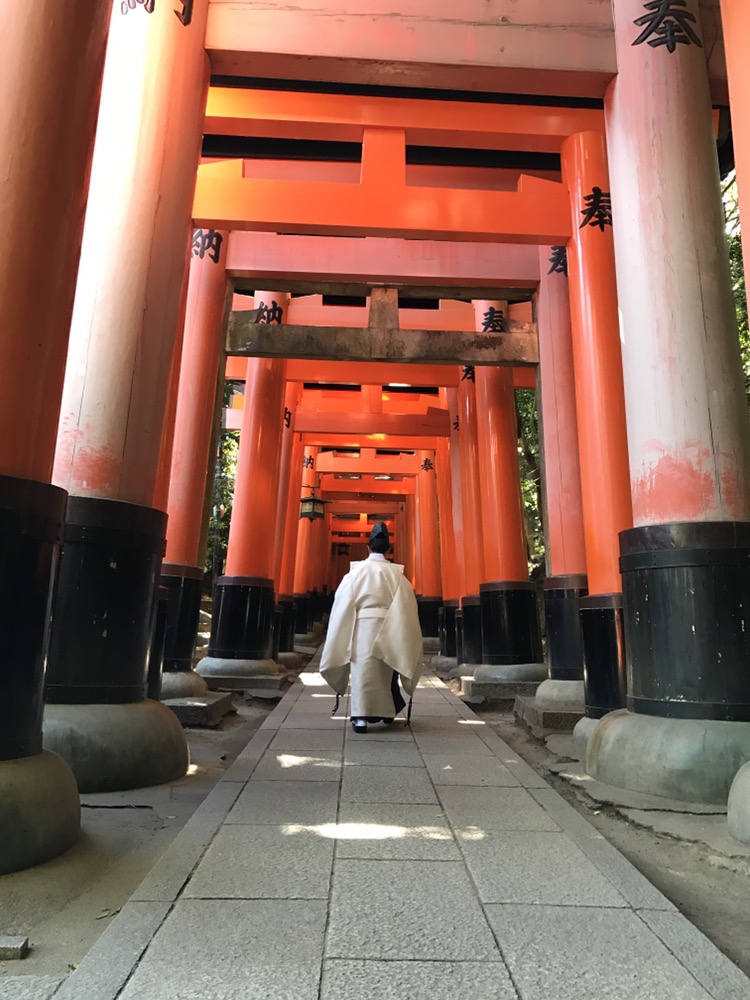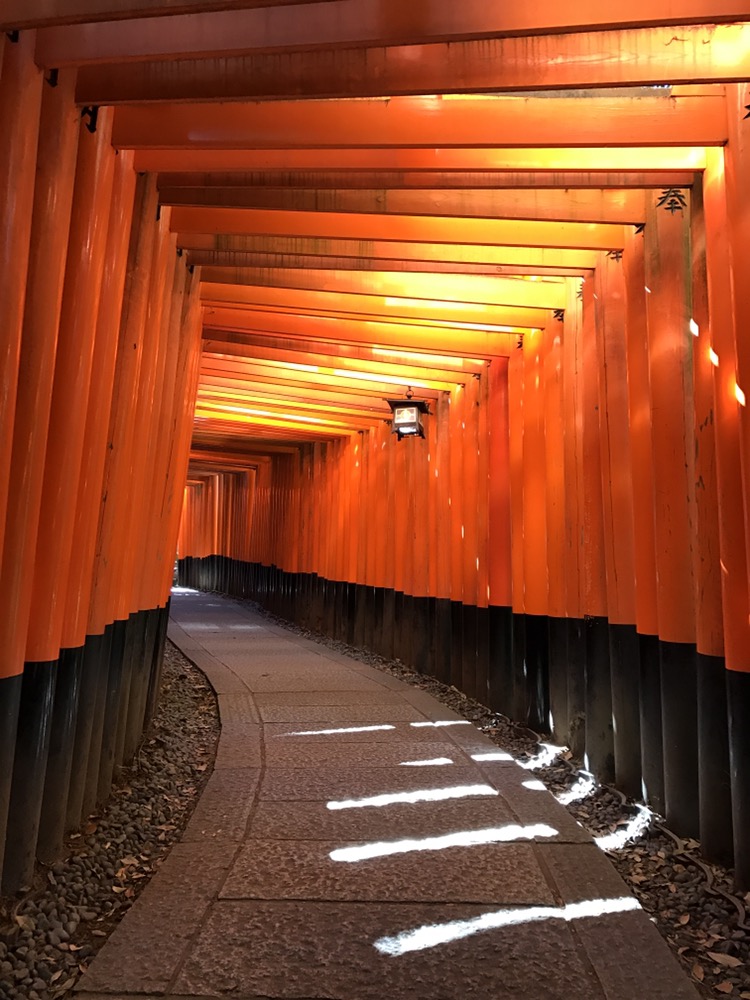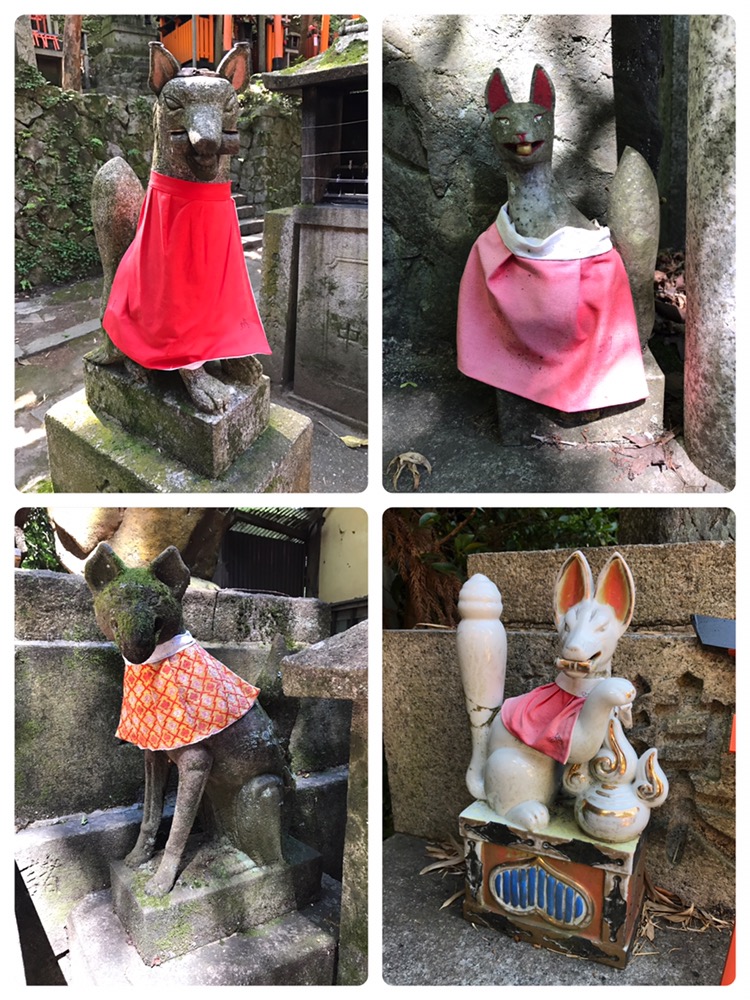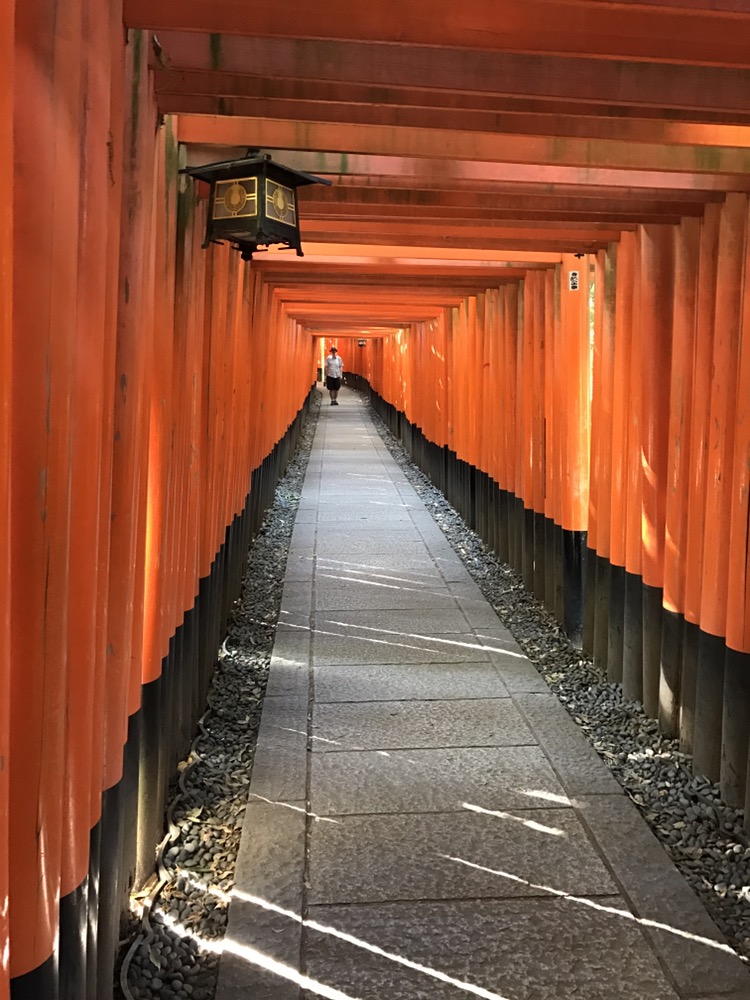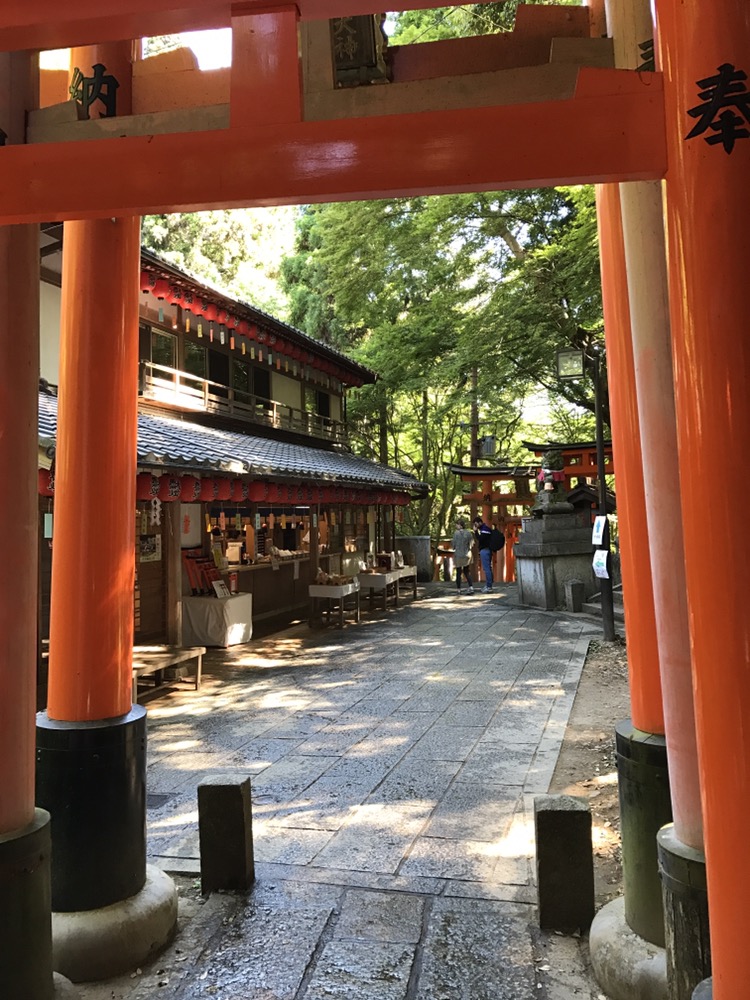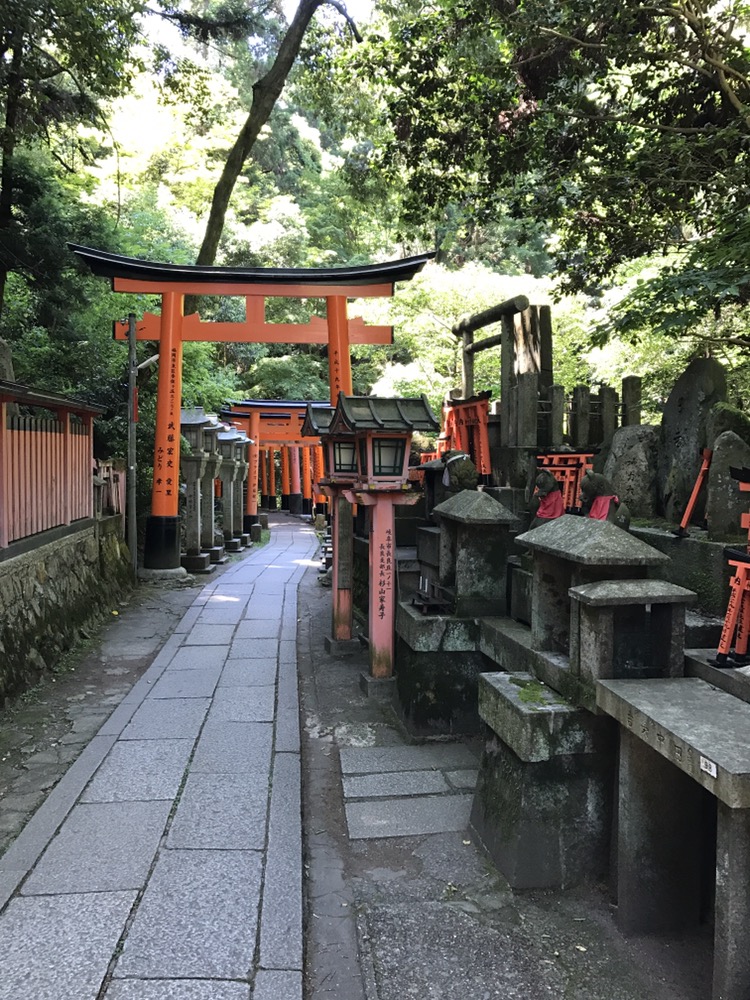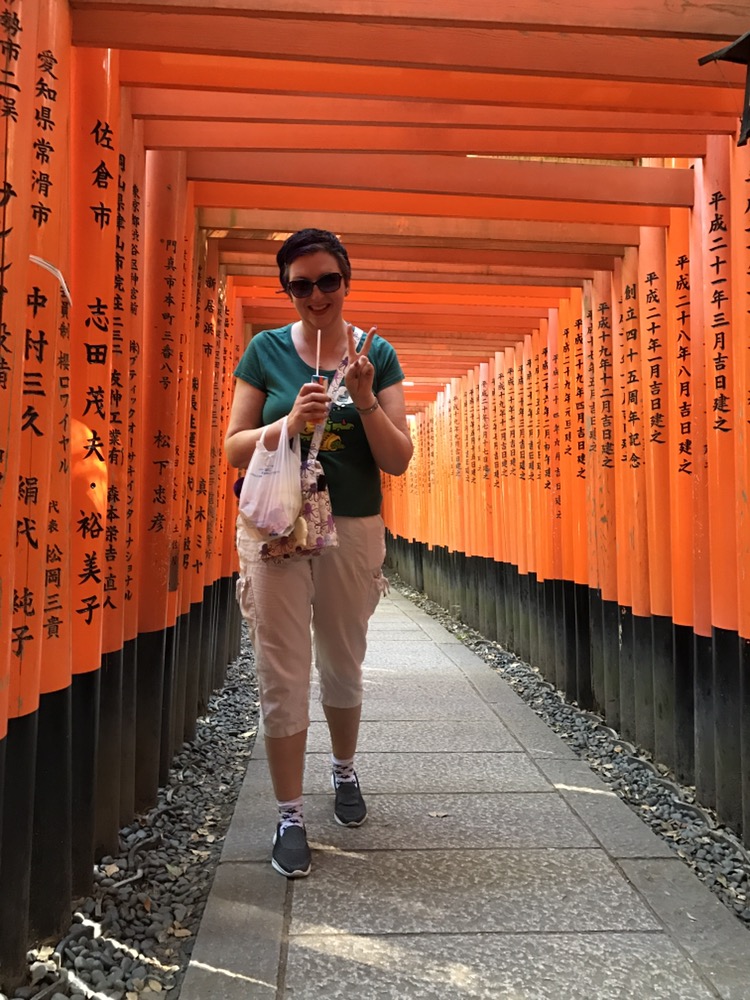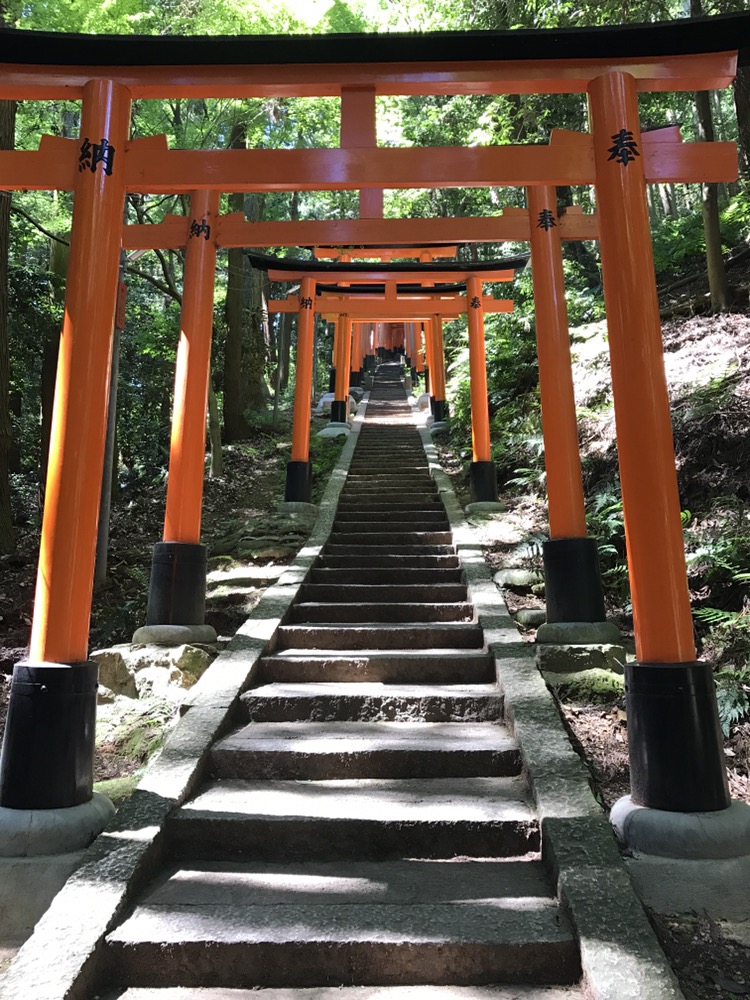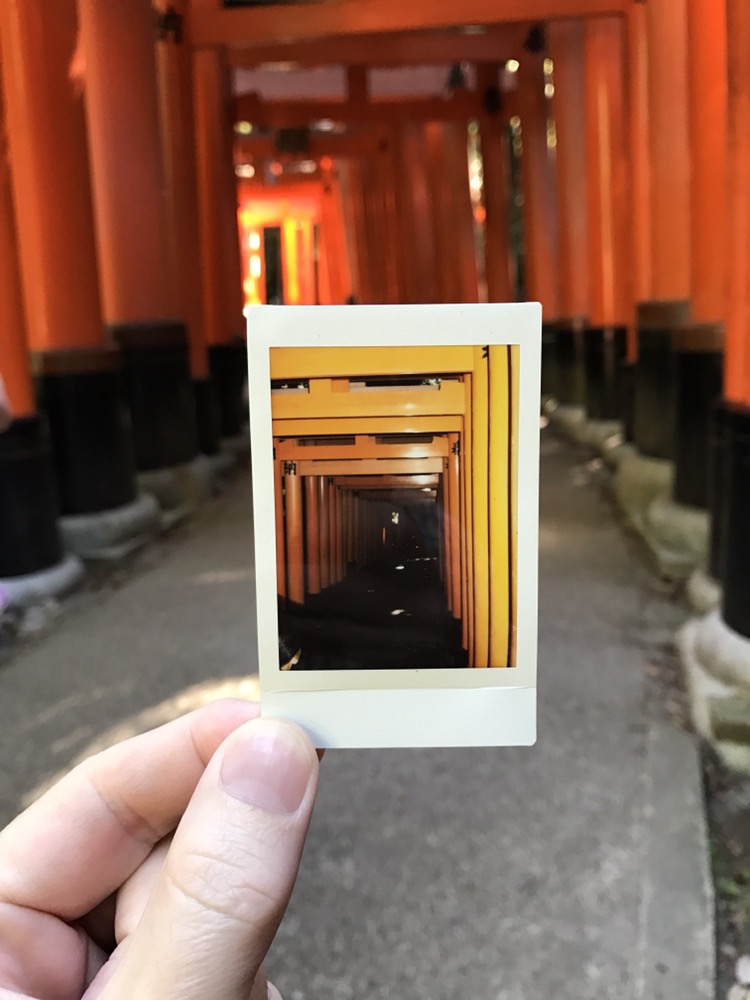Fushimi-Inari shrine, about 10 minutes SE of Kyoto by train, starts off impressively. Directly across the street from the station is a large and lavish complex of temples at the foot of Mt Inari, named for the Japanese rice god. Walk through this complex and you’ll quickly see a path leading past some smaller shrines heading up the mountain. You can’t miss it, since it’s lined with gigantic red tori gates.
These gates are used to denote entrances to shrines or sacred spaces, and the entire mountain is considered sacred, with tens of thousands of tiny shrines dotted all over it and allegedly about 10,000 torii lining the paths.
For certain lengths closer to the bottom, the density of gates is so high it seems you are walking through a hall. The vibrant reds shine in the sunlight and it’s all a bit magical. We went early, to beat the crowds, else photos like the ones I took would be impossible.
The messenger of Inari (the god) is the fox, and virtually every shrine – from the big to the small – feature carved foxes. Look closely and you’ll see an item in their mouths: that’s a key to Inari’s rice granary.
The path winds and twists its way around and up the mountain, occasionally passing by residences that double as souvenir shops and cafes.
Sometimes the path led through areas with great concentrations of smaller shrines that have the appearance almost of a western graveyard.
There’s not a lot of English signage so I can’t explain much of this, but we did learn that the tori themselves have been erected over hundreds of years (over 500 actually) by businesses or families for prosperity and the trend continues today. It’s not cheap to have one erected (up to $13000) but if you do your name will be displayed on the reverse.
While it was early and the temperature comfortable, the walk was still strenuous. Most people walk up to where the path splits, which takes about an hour, and then have an ice cream or rest and return. We pushed on to the summit, and it was during that leg that the challenge increased dramatically!
Closer to the top it just became endless uneven steps! After almost two hours of walking already this was agony, but we eventually made it to the top (alone, since almost no one goes that far!) and we’re proud we did.
While only 233 m, and not a particularly long hike, it was the stairs coupled with the exhaustion from the tip so far that made it such a challenge for us. Well rested, I’d say it would be a tiring but not overly difficult hike.
The shrine neve closes, and you can actually hike all the way to the top at night! This would be simultaneously fascinating and terrifying (signs warn of dangerous boars!) but I’d love to do it, and can only imagine what it’s like from this instant photo someone had left at the base of one gate:
There’s a very good reason Fushimi Inari is one of the most popular destinations in all of Japan. It combines the sort of ancient reverence of the great European cathedrals with astonishingly beautiful scenery and we’ll remember it forever.
